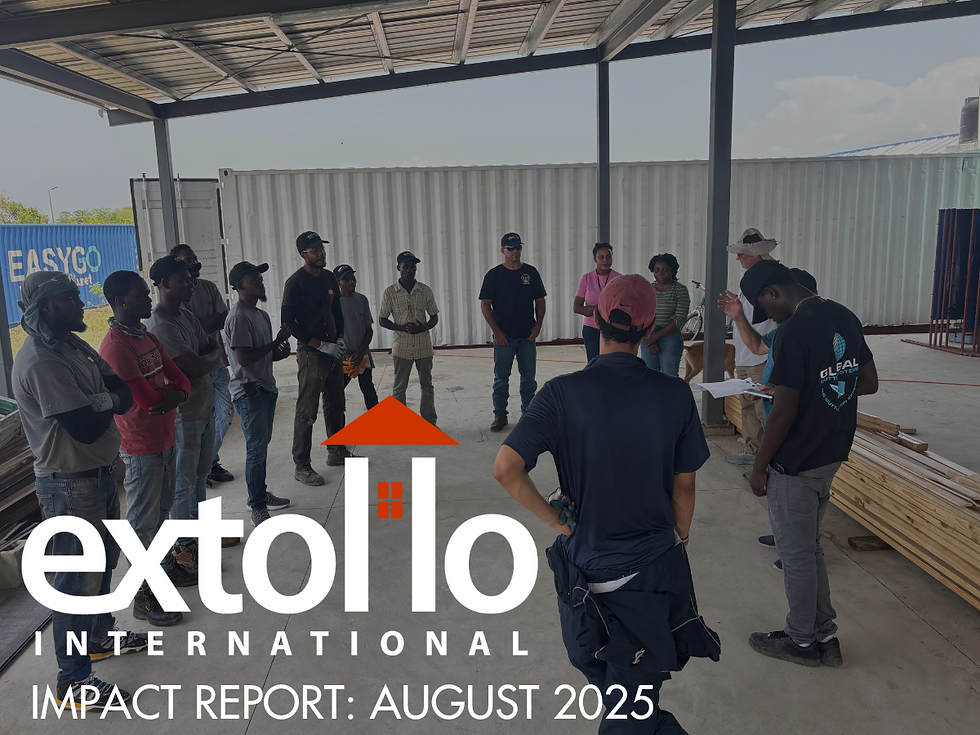A Reflection Ten Years After the Devastating Earthquake in Haiti
- Keith Cobell
- Jan 12, 2020
- 3 min read
Updated: Sep 25, 2020
Ten years ago today, at 4:45pm local time, an earthquake reaching 7.0 on the Richter Scale hit 16 miles west of Port-au-Prince, Haiti’s capital. News of the destruction slowly trickled out of Haiti from journalists living in Port-au-Prince and those fortunate enough to have a cell phone that worked. Over the next hours and days, the world’s attention was on Haiti and billions of dollars of aid money was committed soon after. For those governments and NGOs (non government organizations, ie. non-profits) with a mindfulness to the future, development initiatives were committed as well. Most of those involved in Haiti’s rescue knew that after the initial relief work was done, Haiti was going to need long-term solutions to a country whose infrastructure and economy was in rubble even before the earthquake hit.

Many people, as I do, wonder what happened from all that outpouring of concern and generosity for Haiti’s future. Prior to working with Extollo, I made the assumption that all the money donated to organizations operating in Haiti, and all the attention from luminaries such as Bill Clinton, Sean Penn, and others, had given Haiti a shot at a better future. I thought, naively, that money was the answer. Money buys stronger buildings, stronger infrastructure, and stronger institutions. The money I donated to the work in Haiti was (a very minuscule) part of the $10B committed to Haiti’s future, and I was confident that this amount of money would help build a stronger Haiti for all.
I know better now.
Traveling through Port-au-Prince, and the former camps that are now their own micro-cities, it's an observable fact that what has been rebuilt since 2010 has been the same as before the earthquake - if it’s been rebuilt at all. The National Palace, for nearly a century a symbol of Haiti’s sovereignty and independence, was destroyed in the 2010 earthquake. It is just now in the beginning stages of rebuild. The reasons for this are many and many are culpable. Yet the political and social implications that came with foreign aid pouring into Haiti had an out sized influence on the environment that led to this. It is sobering to recognize that less than 2% of the billions of dollars flowing into Haiti over the last ten years went to the Haitian government for capacity building. Ten years on, is the Haitian government’s ability to respond to the next crisis any better? And will the homes the majority of Haitians were able to build withstand the next natural disaster?
Jonathan Katz, an Associated Press journalist who was living in Port-au-Prince when the earthquake hit, reflected three years later in his book The Big Truck That Went By, “Architects and engineers, poor and unscrupulous, many with no training, built how and where they wanted. Haitian authorities called the result ‘anarchic construction.’ Many of those buildings, perched on unstable earth along a road that plunged nearly seven hundred feet in just over two of its miles, had now crumbled to their foundations.” (p. 27) “Whether you had been in Haiti for fifty years or an hour, whether you were in the most broken-down slum or the best hotel, survival came down to the strength and flexibility of the columns, ceilings, and walls surrounding you at the instant the fault gave way.” (p. 55)
If the international community, including people just like you and me, want to help Haiti become stronger and more resilient, we will help best by building the capacity of Haitians to lead, build, and find their own solutions. “Do not do for others what they can do for themselves” Robert Lupton emphatically states in his book, Toxic Charity. Haiti needs tools - skills, experience, expertise, and the resources to get the work done - and the opportunity to use them.




Comments